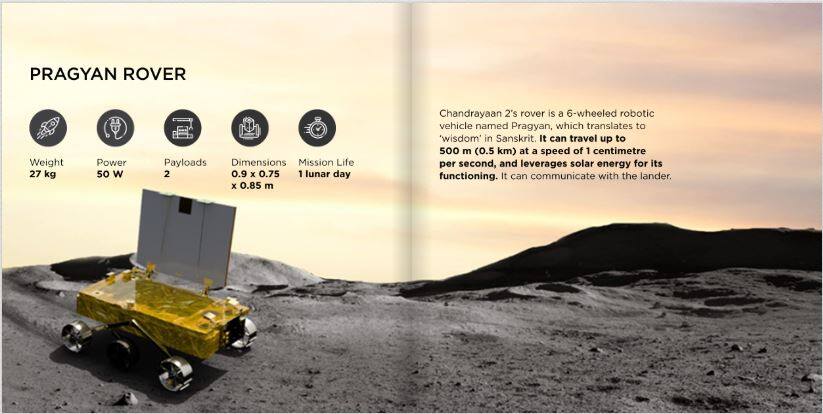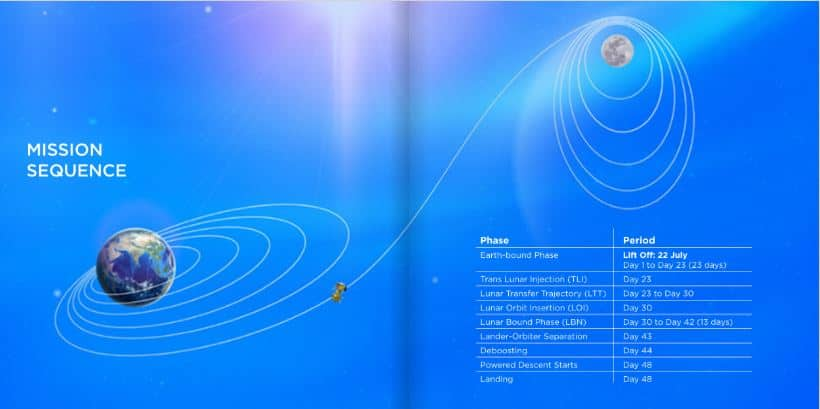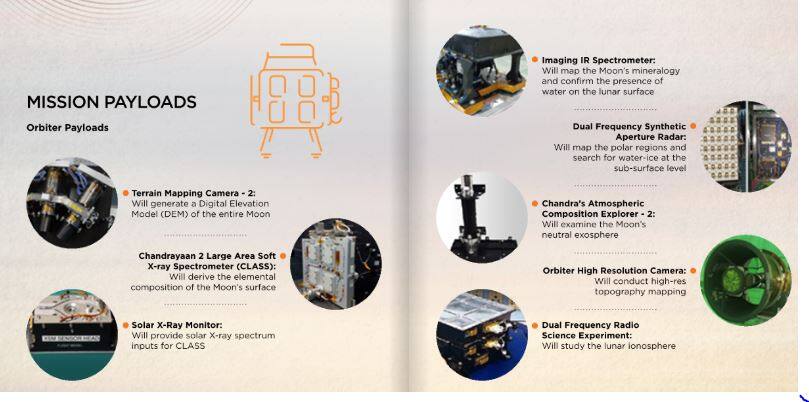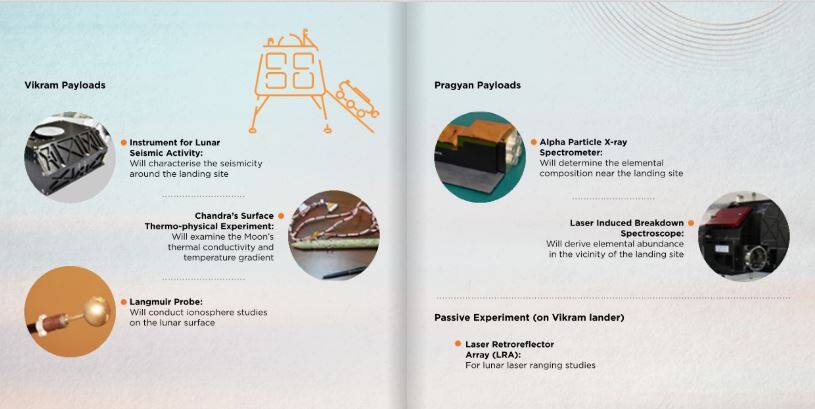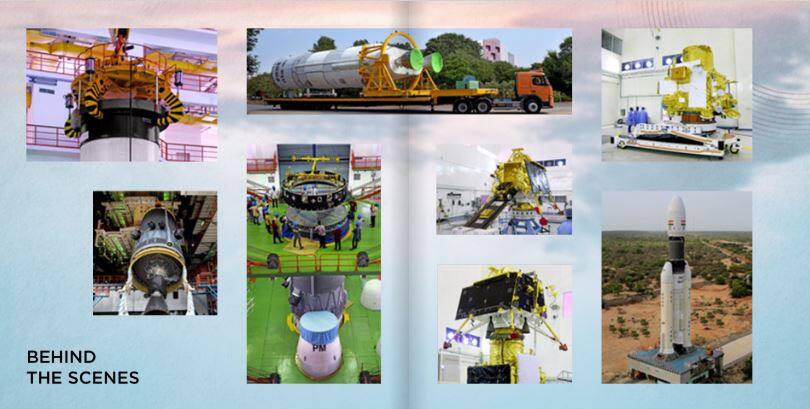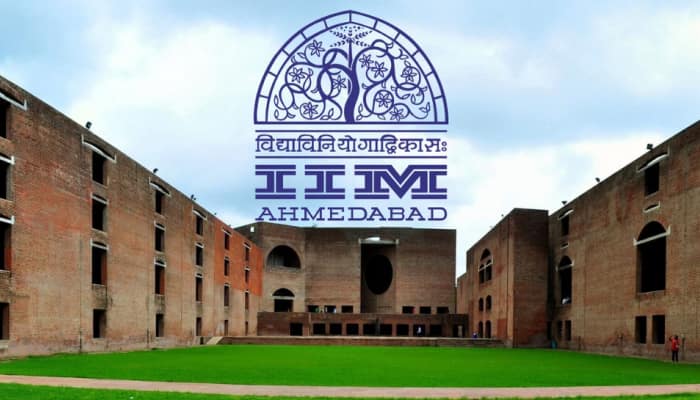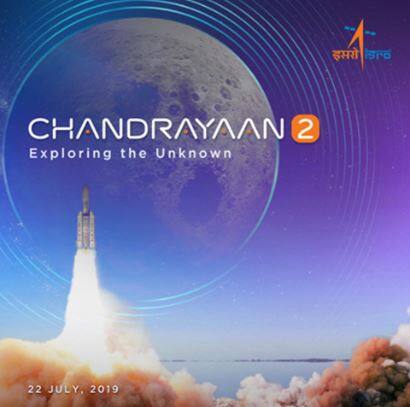
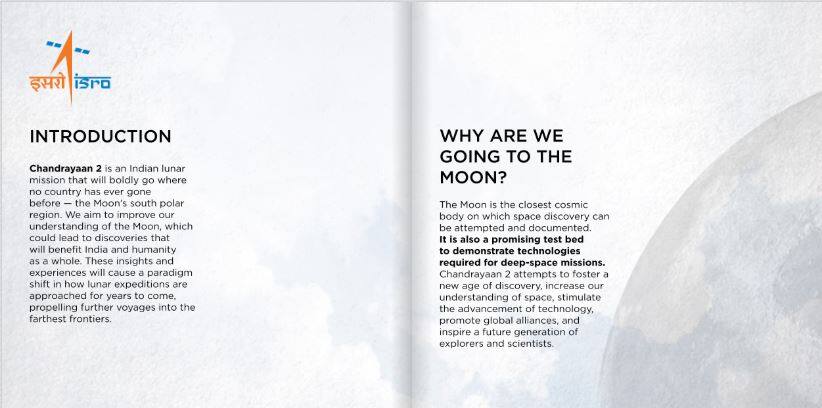
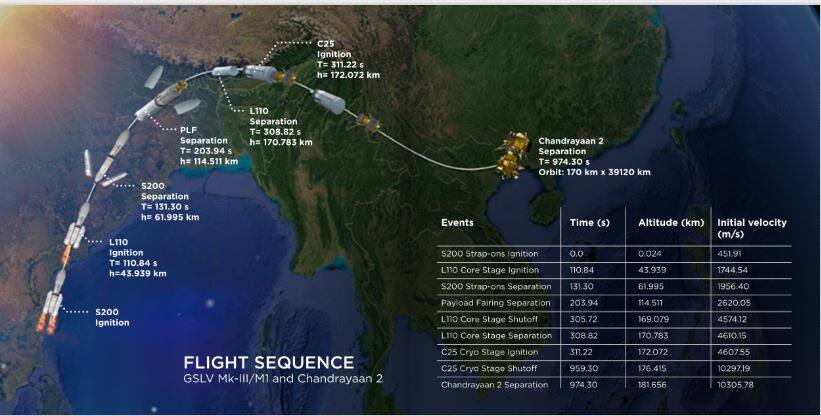
The Moon is the closest cosmic body on which space discovery can be attempted and documented. It is also a promising testbed to demonstrate the technologies required for deep-space missions. Chandrayaan-2 attempts to foster a new age of discovery, increase our understanding of space, stimulate the advancement of global alliances, and inspire a future generation of explorers and scientists.
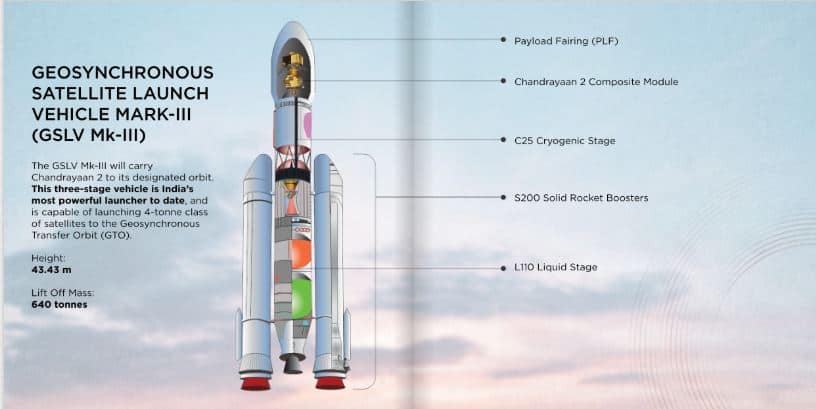
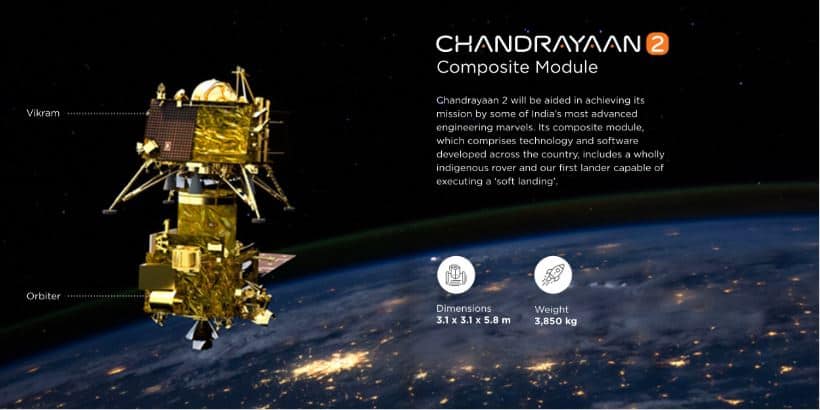
Chandrayaan Composite Module
Chandrayaan-2 will be aided in achieving its mission by some of India's most advanced engineering marvels. Its composite module, which comprises technology and software developed across the country, includes a wholly indigenous rover and our first lander capable of executing a 'soft landing'.

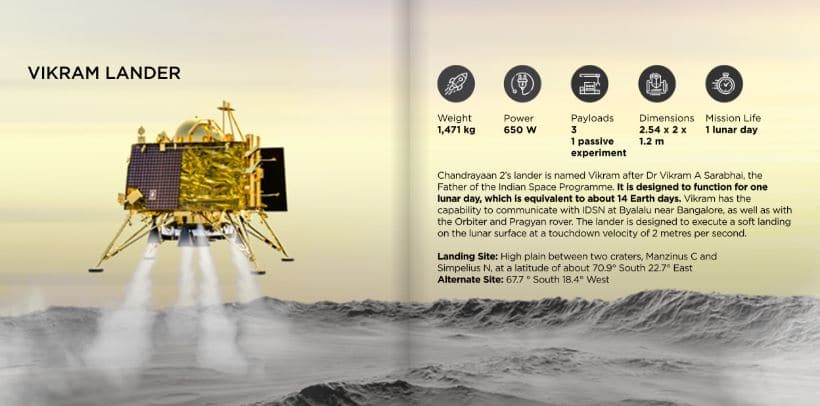
Vikram Lander
Chandrayaan 2's lander is named Vikram after Dr Vikram A Sarabhai, teh Father of Indian Space Programme. It is designed to function for one lunar day, which is equivalent to about 14 Earth days. Vikram has capability to communicate with IDSN at Byalalu near Bengaluru, as well as with the Orbiter and Pragyan rover. The lander is designed to execute a soft landing on the lunar surface at a touchdown velocity of 2 metres per second.
